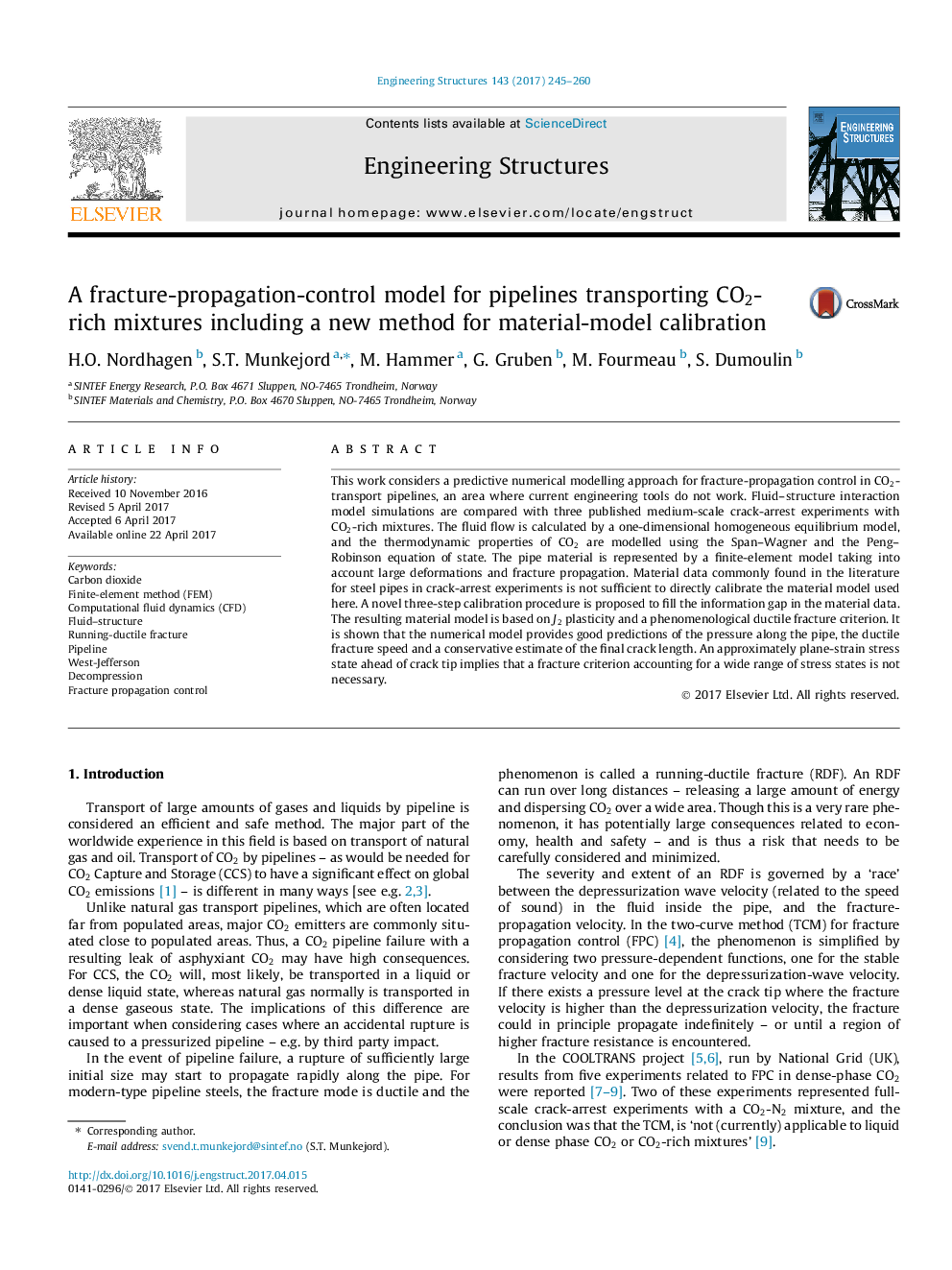| Article ID | Journal | Published Year | Pages | File Type |
|---|---|---|---|---|
| 4920068 | Engineering Structures | 2017 | 16 Pages |
Abstract
This work considers a predictive numerical modelling approach for fracture-propagation control in CO2-transport pipelines, an area where current engineering tools do not work. Fluid-structure interaction model simulations are compared with three published medium-scale crack-arrest experiments with CO2-rich mixtures. The fluid flow is calculated by a one-dimensional homogeneous equilibrium model, and the thermodynamic properties of CO2 are modelled using the Span-Wagner and the Peng-Robinson equation of state. The pipe material is represented by a finite-element model taking into account large deformations and fracture propagation. Material data commonly found in the literature for steel pipes in crack-arrest experiments is not sufficient to directly calibrate the material model used here. A novel three-step calibration procedure is proposed to fill the information gap in the material data. The resulting material model is based on J2 plasticity and a phenomenological ductile fracture criterion. It is shown that the numerical model provides good predictions of the pressure along the pipe, the ductile fracture speed and a conservative estimate of the final crack length. An approximately plane-strain stress state ahead of crack tip implies that a fracture criterion accounting for a wide range of stress states is not necessary.
Keywords
Related Topics
Physical Sciences and Engineering
Earth and Planetary Sciences
Geotechnical Engineering and Engineering Geology
Authors
H.O. Nordhagen, S.T. Munkejord, M. Hammer, G. Gruben, M. Fourmeau, S. Dumoulin,
